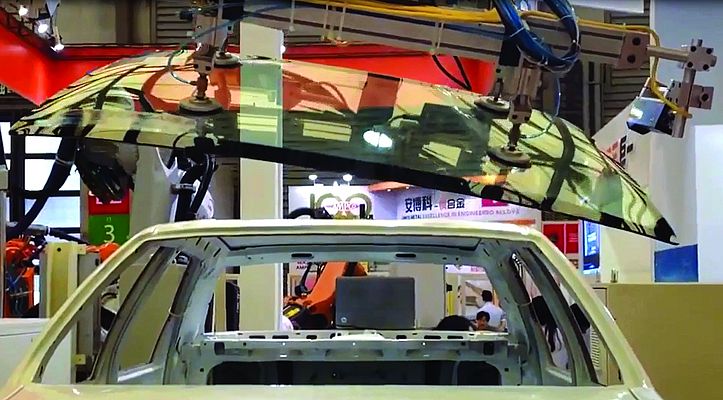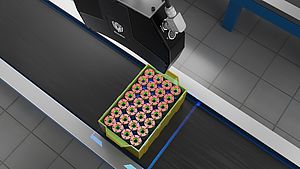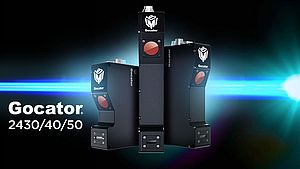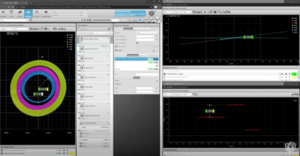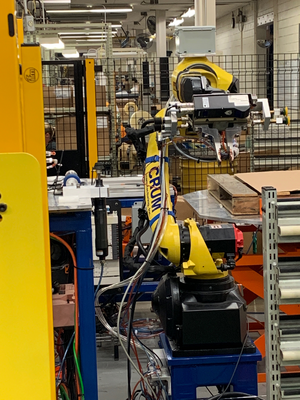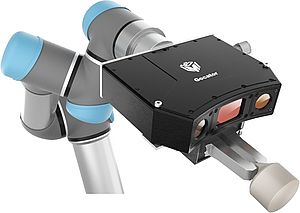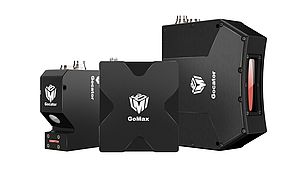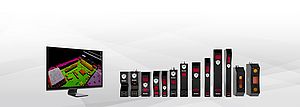Manual insertion of glass into car bodies is an intensive and imprecise job, with the opportunity for body damage and glass breakage leading to significant safety risks to assembly operators.
Alternatively, robotic insertion methods are complicated because the car body location is not precise, and therefore requires vision guidance to transform robot end effectors to compensate for body location variation and to optimize the position of the glass.
The system integrator Bluewrist is a long-term partner of LMI, specialized in the development and marketing of robotics and machine vision solutions, including 3D inspection, robot guidance, bin picking, 3D scanning and robot calibration.
The Solution
Bluewrist mounted 4 Gocator 2300 series 3D smart sensors on the robot end effector of their insertion system in order to monitor location of 4 critical points on the windshield aperture. Technicians used Gocator’s built-in Edge Tool to determine the 3D location of critical points on the aperture.
Gocator 3D measurements were then communicated to an external PC equipped with Bluewrist EzRG Advanced Robot Guidance Software, which calculates transformation data in 6 degrees of freedom and then sends its calculations to the robot controller. EzRG provides a wide range of robot guidance and user-frame calculation strategies, including Best-fit of Measurement, 3-2-1 Fixturing, and a User-Frame Formulas Interpreter. The calculation takes less than 0.5
seconds and the guidance accuracy can achieve up to 0.2mm.
The following is the sequence of the windshield insertion operation:
- Robot picks up glass from fixed location using suction cups on the end effector
- Robot moves glass to near nominal insertion point
- Sensors measure actual aperture position
- EzRG calculates translation values
- Robot moves to optimal position and inserts glass
Najah Ayadi, President of Bluewrist, declared that: “The Gocator’s built-in smart measurement and exposure control delivers a 3D solution at incredible value.’’
Gocator 3D Smart Sensor key features
- Gocator’s automatic exposure accurately measures all colors, essential for painted bodies
- Compact and rugged, sensors are easily mounted on the end effector without interfering with other components
- All-in-one design results in more room in the electrical panel for other critical components
- Immune to robot movement and vibration
- Gocator’s light weight does not add significant mass to the end effector
- Gocator smart sensors' all-in-one design and simplified cabling allow it to integrate seamlessly with robotic machinery
- Built in measurement tools eliminate image analysis software development
Advantages of the Bluewrist Windshield Insertion System
- Demonstrates 3D sensing integrated with robotic automation
- Automates insertion process with high accuracy and speed
- Replaces manual insertion process for components that are not precisely fixtured
- Improves quality and operator safety
Highlights
-
Gocator easily mounts on robot end effectors for complex 6DOF guidance for assembly
-
Long term partnerships lead to solutions for new applications
The Result
The Bluewrist Windshield Insertion System was successfully demonstrated at AMTS 2015, providing a strong example of how LMI and Bluewrist are working together to create more robust robotic guidance machine vision systems.


